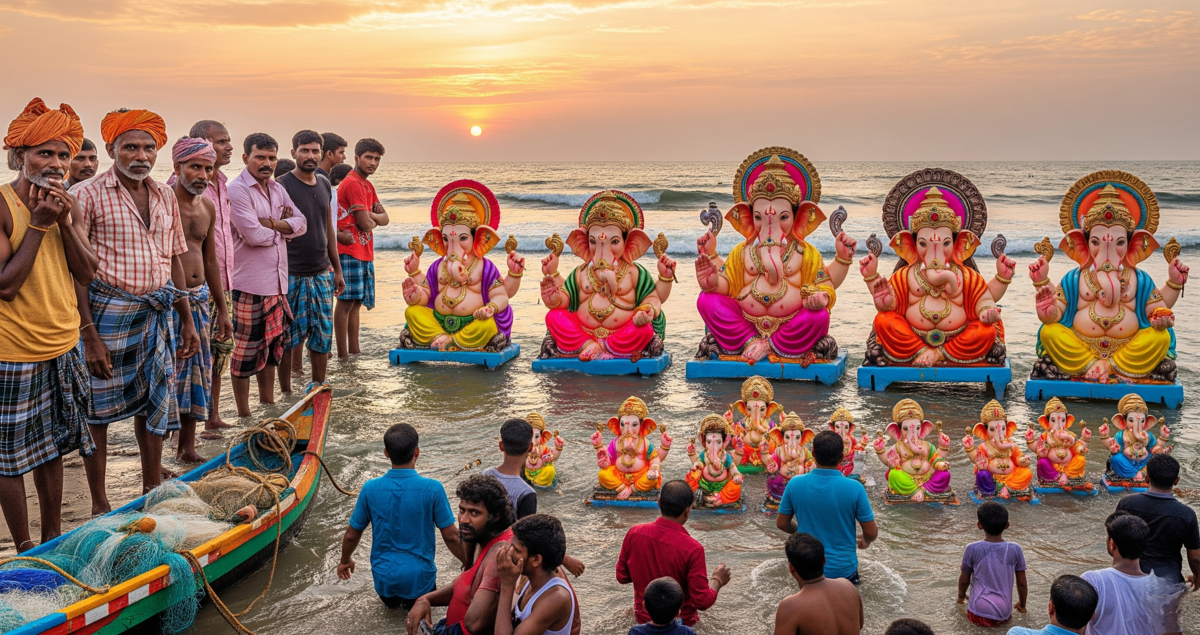Fisherfolk raise red flag over idol immersions at Pedda Jalaripeta in Visakhapatnam
Ganesh Chaturthi celebrations are still lively in Visakhapatnam. Families, youth groups, and local associations are carrying idols to the beaches for immersion. Three days after the festival, colourful processions with music and prayers remain a common sight across the city.
But fishermen in Pedda Jalaripeta and Lawson’s Bay are worried. They say immersions at their beaches are polluting the sea, reducing fish stocks, and putting their livelihood at risk.
Before the festival, community leaders submitted petitions to the District Collector, Police Commissioner, and GVMC Commissioner. They said immersing large idols made of plaster of Paris (PoP) and painted with chemicals has reduced fish numbers in past years.
“Our experience shows that fish catch drops after these immersions,” said Teddu Prasanna, headman of Pedda Jalaripeta. “If the sea is polluted, our boats return empty. This is not only about the environment, but also about our survival.”

The community has allowed only small clay idols to be immersed at their beach. Nearly 200 household idols were immersed on the day after Vinayaka Chavithi. But large PoP idols have been banned. “Clay dissolves in water without harm, but PoP stays for months and damages the seabed,” said fisherman B. Srinivasa Rao.
Residents also support this move. “Many families are already using clay idols or symbolic immersions. It is safer for the sea,” said P. Lavanya, a local resident.
Experts agree. Dr. R. Venkatesh, a marine biologist, said, “PoP idols release harmful chemicals into the water. This practice cannot continue. Artificial ponds and strict monitoring are needed.”
The GVMC has set up immersion sites at Gokul Park and Sagar Nagar, along with temporary ponds. But locals say enforcement is still weak.
For fishermen, the issue is urgent. “We respect the festival, but we cannot sacrifice our sea. It is our temple and our future,” said Srinivasa Rao. The dispute shows a wider challenge for India’s coastal cities: how to keep traditions alive while protecting marine life.



